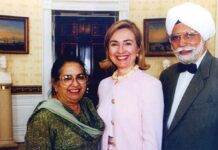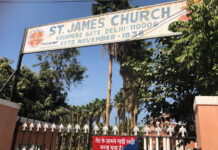By Tanvir Thakur
CHANDIGARH: Beginning in the 1990s as Kullu-Manali in Himachal Pradesh became crowded with foreign tourists, many of them started venturing into the nearby town of Kasol.
Located about 70 km from Manali towards Manikaran, Kasol is ideally located at the foothills of Malana – the village known as the oldest democracy in the world, but even more famous for its world-class hash Malana cream.
As it lies on the banks of the Parvati river, Kasol has also become as the favourite Himalayan hotspot for backpackers.
Many Israeli tourists settled in and around it during these years, resulting in the Parvati Valley being dubbed `mini Israel’ in India.
As these foreign tourists settled in the Parvati Valley, the stories of moon parties, drug cartels, and hybrid cannabis started circulating as the locals became wary about preserving their culture and heritage amid this foreign invasion.
Then began stories about the disappearance of foreigners in the Parvati Valley. Over a period of two decades, as many as 21 foreigners has disappeared, adding to the mystery of the mystic Parvati Valley – which has been dubbed the Bermuda Triangle’ of India.
Chandigarh-based Times of India journalist Aditya Kant delves into these disappearances in his debut novel ‘High on Kasol’ which has become a hot seller on Amazon since its release last year.
“Most of the theories being floated about the mysterious disappearance of foreigners from the Parvati Valley seem to be more of guesswork. There have been stray incidents of crime involving Nepali porters but it’s unfair to blame locals for these disappearance,” he says.
With some people in Bollywood showing interest the unique plot of this acclaimed crime thriller, the journalist-turned -author narrates why he chose this subject for ‘High on Kasol’ and how his subject matter has resonated with the readers, particularly youngsters and families grappling with drug addiction.

Excerpts from an interview with Aditya Kant:
Q Why did you choose drug menace and the disappearance of foreigners as the subject of your debut novel? What motivated you to write this out-of-the-box plot?
I was born and brought up in the hills. Despite staying away for several years, I still have a great fascination for the life in mountains. Now I see a big transformation in the hills in terms of living.
How the simple life there has now transformed under modernization and is losing its purity always bothered me. Also in my earlier days of journalism, I spent more than half a decade in Delhi as a crime reporter. It really helped me get insights into the life of young drug addicts and peddlers.
While covering some high-profile cases such as Jessica Lal’s murder that had brought into the limelight the party culture in the metro I got a chance to interact with several youngsters. I found there were many who were not even regular consumers but they would be curious about the high-quality hash, ‘Malana’ cream, and the places in Himachal which are known for growing this world-class hash.
Though they were curious to know about such hotspots in the hills, most of them had half-baked information and false notions about the Kullu Valley. Many of them were completely ignorant about the beautiful life and culture of the hills. In the later years, while covering news reports regarding the drug trade, missing foreigners, and about many foreign nationals who got settled in the Kullu Valley after marrying locals, I realized every one of them had a unique story, which I thought needed to be told.
Q Give us some insight into the plot and the making of your debut novel ‘High on Kasol’
It has a gripping plot about the mysterious disappearance of an Israeli woman, a hook that keeps the reader engaged till the end.
At another level, ‘High on Kasol’ gives insights into the transformation of life in a small tourist hotspot in the hills which was once known for world-class hash but has now an ample supply of synthetic drugs. It mentions how the new trend has started affecting the lives of youth and their families.
The narration gives details about the perception and notion of youngsters and those of Page 3 crowd of Delhi, Mumbai, and other metros about the life in hills. It also highlights how youngsters from metros who are drawn towards drugs and the culture of rave parties, are being allured and trapped by the drug syndicates and peddlers.
High on Kasol has elaborated on these aspects through one of its characters, who is curious and fun-loving and is crazy about rave parties, but is completely oblivious to the horror and sufferings that are in store for her. It also elaborates on the conflicts and struggles of locals in the hills, with the cultural invasion by foreigners and other outsiders.
Q How do you look at the social relevance of your plot? Have you given some social message through your story?
High on Kasol has a strong message against drug abuse and its serious effects not only on the drug users but their families as well. It underlines the need to preserve our traditions and to take care of our heritage and culture. It’s good to have technology and youngsters having access to more information but they must have the ability to decide what really is useful for them.
In today’s world, it’s just not possible or even justifiable to keep youngsters under restrictions. Better would be to groom and prepare them in such a way that they are able to distinguish between what is good and what is bad for them.
Q ‘High on Kasol’ has evoked attention from many Bollywood celebrities. Has anyone approached you for its adaptation for a silver screen?
Not only Bollywood celebrities but renowned dignitaries including the Governors of Punjab, Himachal, and Gujarat where my book was launched separately, have appreciated the plot and the message of the book. It was really gratifying.
From Bollywood too, celebrities such as Kangana Ranaut and Nimrat Kaur have responded enthusiastically to my book. In fact, some Mumbai-based production houses have approached me, expressing their willingness for copyrights of High on Kasol for adaptation into a web series for OTT platforms. It’s encouraging to find that your idea is resonating with people and being recognized by the creative people.
READ NEXT: How City of Joy sparked my interest in India








